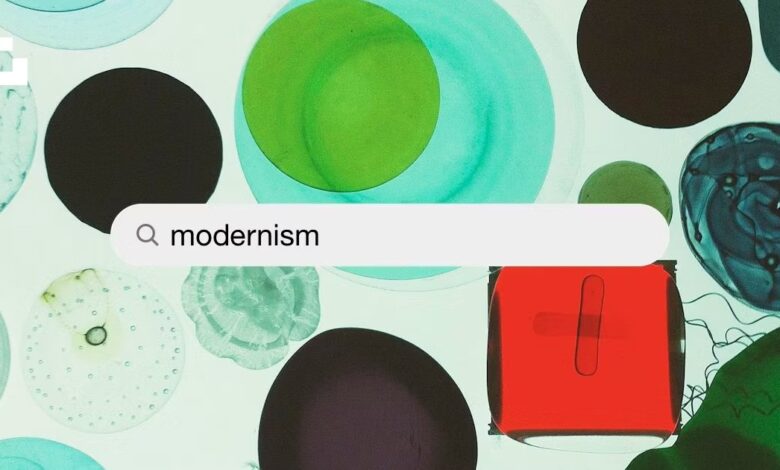Modernism is Innovation

Over the last century, modernism has been a unique type of literary work. It is referred to as modern and separates it from what is simply modern because, where modern refers to time and style, modern is a reference to sensibility and style as opposed to being considered to be a neutral term, and modern refers to a type of judgement, critical positioning, and judgement. Modernist literature now appears to be approaching the end of its run, but we cannot know for sure. However, some believe that, due to the state of our current society, the genre is not going to ever be finished. This kind of writing that’s called contemporary is usually difficult to access. This is an indication of modernity. For an older society, the modern author appears completely difficult to access. The writer works in unfamiliar ways as well as on subjects that irritate the reader and threaten their most beloved beliefs, he entices critics of the traditionalist view to terms that include “unwholesome,” “coterie,” and “decadent.” The contemporary should be defined using its characteristics. It is, however, an expression of a tacitly polemic, a broad negative. Modern writers realise that they are working during a period when the cultural landscape is defined by a prevailing sense of perception and emotion as well, and their contemporary is manifested in a rebellion against the dominant style that is uncompromising rage at the dominant system. Modernism, however, does not create an established style of its own, or, if it does, then it denies it, thus denying itself the right to be modern. It is the problem that, in theory, could be unsolvable, however, in the real world, it results in formal innovation and a resolute dialectic; it is the issue that modernism has to fight yet never really wins and, in the end, at some point, has to fight again to not win. Modernism is not likely to come to an end. At the very least, we don’t have a clear idea of the way it could or might get to its conclusion. The past writing periods are important but not too crucial in this case, as modernism, despite the predecessors that can be found in the past, is, to my mind, a new phenomenon in the evolution of Western cultural practices. The thing we have in common is that the modernist movement can come into a state of exhaustion which suggests that it is looking forward to fresh avenues being released.
Developments of Culture

In certain moments in the growth of a society, typically, when there are moments of frustration and agitation, authors are prone to provoking their audiences in a way that is not based on an impulse or desire, but rather on an underlying moral or psychological need. These writers might not realize that they are in opposition to the dominant beliefs that are prevalent in their time, but their work is revolutionary. When this is recognized by empathetic critics and a group of fans, the avant-garde begins to become an unapologetic and aggressive group. The reason for this conflict? is that modern writers cannot accept the assertions to be true of our world. If he fails to conform to the beliefs of the people around him, he’s angry and depressed. Morality is often portrayed as fake taste, which is a gentle indulgence, and tradition as an unsettling fetter. As a writer, it is a requirement that you do not only and often not against the opinions of others and practices, but rather against accepted methods of completing the writer’s job. Modernism is a culture that quickly learns to accept, and even appreciate the signs of division. They see uncertainty as a sign of illness. It searches for moral norms using underground travel, experimentation using sensation, and a dissembling suspension of accepted value. On the passport from the Wisdom of the Ages, the stamp has bold red lettering, Not transferable. The stamp engenders, to use Thomas Mann’s terms, “a sympathy for the deep.” It strips man of the shackles of his belief systems and ideal beliefs and offers a unique contemporary approach to salvation through modernism and in self. The modernist worldview is that the object viewed is always in danger of being swallowed by the person who perceives it and perception itself could be elevated as the essence of reality. I perceive, and therefore am. Subjectivity has become the standard feature of modernist thought. In its early phases, in which it doesn’t attempt to conceal its dependence on Romantic poets, modernism reveals itself as an expansion of self-interest, the transcendental and spiritual re-examination of events and matter for the sake of individual vitality. At the midpoint, the self begins to retreat from the external world and devotes itself, like the body of the universe, to a brief study of its inner complexities, which are characterized by compulsion, freedom, and the desire to be free. At the end of the process, the self begins to empty itself, and repulsion arises against the exhaustion of both personal identity and psychological gains. (Three authors are considered to be exemplars for the stages of this, Whitman, Virginia Woolf, and Beckett.) Modernism thereby keeps approaching, sometimes even penetrating, the limits of solipsism, the idea put forth by German poet Gottfried Benn, who claims that human consciousness is the only entity that exists and is always creating, altering, and reconstructing new worlds of its creativity.
Two Different Ways of Living

Beyond this extreme subjectiveness lies an equally extreme feeling of historical insanity, the belief that the events of the present are original, a disaster that has never been seen before. The German writer Herman Hesse speaks about “a whole generation of people caught… . . . between two age groups as well as two different ways of living, and the result is that it is unable to comprehend itself, and is left with zero standards, no assurance, and no easy acquiescence.” And most importantly, it is not a simple agreement. The question of whether all this is accurate doesn’t matter enough to the point that the modernist artists, writers, composers, and musicians—Joseph Kafka, Pablo Picasso, and Schoenberg—have been working on the implicit assumption that this is the truth. The modernist perspective suggests an impasse, or an end to history and the apocalyptic theological cul-de-sac, where both the ends of teleology and progress in the secular world are put into question and may eventually become out of date. Man’s plight is your pick—in the crowd or the machine in the city, the loss of his faith with the despair of living without intent or any value beyond the end. At this point, all these catastrophes appear in our minds to be merged. Around the time of December 10, 1910, the human condition evolved.” In this particular hyperbole, Virginia Woolf meant to suggest the existence of a frightful disconnect between the conventional past and the shaky present and that the line of the past has been twisted or even fractured. Modernism is literature that relies on the tacit belief that our natures have altered, possibly a couple of years before the date mentioned to Mrs. Woolf, or, as Stephen Spender remarks, the situations in the conditions we live in, which are forever changing by nature, are now so radical that humans feel their natural inclination to change and behave accordingly as if it had changed. Modernism is a form of modernity.
Historical Contexts

In this sense, it can’t be considered separate from its historical context. It was shaped by, affected by, and then reacted to the massive changes in technology, society, the sciences, geopolitics,, and philosophy. Modernism is moving at a baffling pace, and the astonishing nature of many of these developments prompted some modernists to announce a significant change in the human past and the need for art to be able to respond. Modernism is when artists introduced formal experimentation as well as non-traditional subject matter as essential elements of the modern era. Based on the idea that traditional forms would not be adapted to the new environment The modernists sought to convey the excitement as well as the contradictions, horrors, and possibilities for utopianism in the modern age. They both contributed to and capitalized on the new market for speculative art by publishing each other with small magazines and critiques in which they showcased each other’s work as they perfected the art of limited editions as well as manuscript sales and also helped to establish connections with collectors who had well-endowed collections. Their accomplishments in this endeavor can be proven. However, the fortunes of modernism varied in the 20th century, moving from its hegemonic position as the top of (white male Western) high culture, under the name of contemporary art ( c. the 1950s-60s) and then to the gradual introduction of women artists and those who were of color ( 1970s–80s) while being slammed as the symbol of racism and elitism ( 1980s–90s) before finally returning with a more catholic and soaring style, exemplified by pluralism, the modernists (1999-present).



